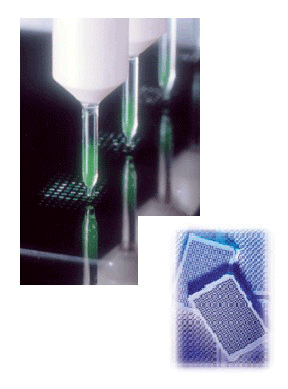

| Home | ||||||||||||
| Vaccine Testing |
||||||||||||
Research Materials
|
||||||||||||
| Links | ||||||||||||
| Contacts | ||||||||||||
| Frequently Asked Questions | ||||||||||||
| Publications | ||||||||||||
Post Genomics
|
Program description: |
 |
Application criteria:
To obtain M. tuberculosis DNA microarrays research laboratories must submit a Microarray Application to the “TB Vaccine Testing and Research Materials” Contract. All information provided in the application will be handled as confidential. In addition to submitting an application, the requesting laboratory must also Register with the contract, fill out an Order Form, and submit a Materials Transfer Agreement. There are several factors that will be considered in the approval of applications requesting M. tuberculosis DNA microarrays. These are:
- Will the research laboratory utilize the microarrays to conduct important and relevant research?
- Does the research laboratory have the facilities to perform micrarray experiments and compile the results, or have collaborations in place to accomplish the same? (Access to microarray readers and processing software will not be provided under this contract.)
- Has the research laboratory provided a sufficiently detailed description of its proposed M. tuberculosis experiments to be conducted with the microarrays?
- Will the research laboratory use proper methods in conducting its proposed M. tuberculosis research to be carried out with the arrays?
- Can the research laboratory verify the results of its M. tuberculosis microarray slides?
What happens when the application is approved?
The research laboratory will be notified about their application through Dr. Richard Slayden. Upon notification, the Principal Investigator of the laboratory will correspond with Dr. Slayden regarding any discrepancies in the application.
All microarray experiment that use reagents provided by this contract must be performed under the requirements of MIAME (Minimal Information About a Microarray Experiment) (http://www.mged.org/Workgroups/MIAME/miame.html). The goal of this is to outline the minimum information required to unambiguously interpret microarray data and to potentially verify array based gene expression experiments. Although the details for particular experiments may differ, MIAME aims to define the core requirements that are common to most microarray experiments. The MIAME guidelines will assist with the development of microarray repositories and data analysis tools. MIAME specifies six-main areas:
- Experimental design
- Array design
- Samples extraction preparation
- Hybridization conditions
- Data collection, normalization and analysis protocols